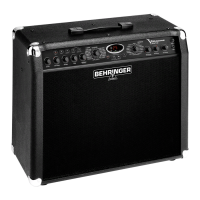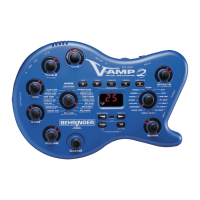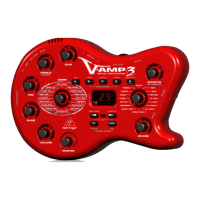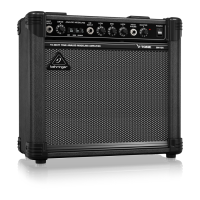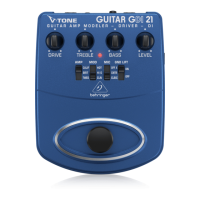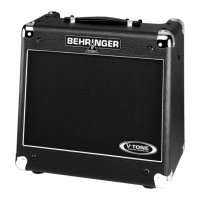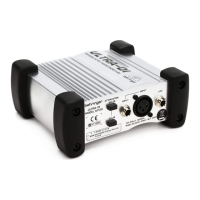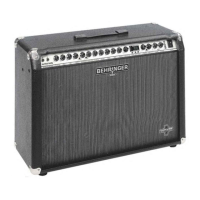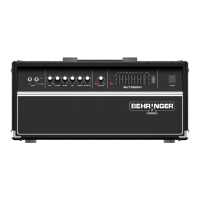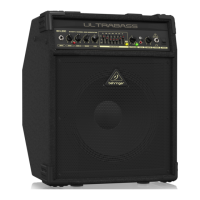10
V-AMPIRE LX1200H
One advantage of rehearsing at home is that there is often a
computer available which allows you to design, edit, send, receive
and archive new presets comfortably and effectively. Download
our V-AMP DESIGN software free of charge at www.v-amp.com.
You can create your own presets even with minimum system
requirements (Windows PC with MIDI interface or gameport MIDI
adapter). On the V-AMP homepage you also find an online preset
database (ULI, user library interface) with plenty of presets created
by other V-AMP users and famous artists. Here, you can upload
your own favorite presets and make them accessible for other
users.
Using studio mode 2 (S2) at home can be a good idea when it
comes to recording an amp sound without effects (dry) but
monitoring it with effects (wet). Working this way, you are
able to choose the effects you want later during mixdown. In
this case you would route the left output to the soundcard of
your computer and monitor the right output via your mixing console.
Figure 3.3 shows a typical home/rehearsal room application.
We recommend modes S1, L1 or L2.
Fig. 3.3: Standard stereo setup with
2 x 8
Ω
impedance (stereo)
S1 comprises all amp, speaker and effects simulations. The
same applies to mode L1 which also includes the 3-band EQ for
additional sound adjustment, for example when you use
headphones of inferior quality. Mode L2 works similarly but here
the digital speaker simulation (stored in a preset) is switched off
and replaced by our analog ULTRA-G simulation (enabled on the
XLR or phones outputs only).
+ When connecting headphones, the amp signal is
automatically muted. Thus, if you unplug the
headphones we strongly recommend to turn the
MASTER control to the very left. The XLR output is
independent of the MASTER control setting. This
allows to tap into a line signal for recording
purposes, even when MASTER control is set to
minimum.
The stereo AUX input enables you to play back line signals like
CDs, drum computer etc.
3.4 Studio recording/recording
For this applications we assume that at least a mixing console
and a recording device is available.
As with rehearsals at home or anywhere else, the V-AMPIRE
can be connected directly to a mixing console or recording device
via its XLR outputs. In addition, you can use the pre DSP insert
send to record the same direct guitar signal without needing
another DI-box for impedance adjustment.
Since the usual volume problem does not exist in studio
environments, the LX1200H has more to offer than those features
described in chapter 3.3. In the studio you can raise the volume
to take full advantage of the V-AMPIREs own sound. This can
be of particular interest if you have a particular speaker cabinet
with its own sonic character, or if acoustic feedback from the
guitar speaker to the guitar is desired. For the first scenario, you
will need to use a microphone to capture this special loudspeaker
tonal quality. For the second scenario, you can directly feed the
XLR output into the console without the feedback sound being
gone. We recommend mode L2, with 3-band EQ but without
digital speaker simulation.
Fig. 3.4: Expanded recording setup with a multitrack-recorder
and a mixing console
3. OPERATING MODES AND EXAMPLES
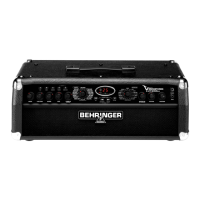
